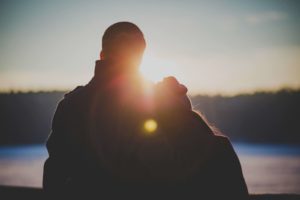On Oct. 11, National Coming Out Day, I had the good fortune of attending the BOLD Awards at the San Francisco LGBT Community Center, for which I’m a Founding Donor. It was thrilling to hear the phrase “lesbian, gay, bisexual and transgender” over and over from honorees and center volunteers. In contrast, whenever I give a talk on straight spouses whose husbands or wives come out as lesbian, gay, bisexual or transgender, someone in the audience inevitably says, “But there’s no such thing as bisexuality!”
“Yes, there is,” I answer. “Bisexuality is a valid and actual sexual orientation. I know that from working with and studying bisexual persons over the past 26 years.” Sexuality does not have a binary switch, with the only two options, “gay” or “straight”; rather, it is a complex and fluid human trait, a spectrum along which people can be found at every point. Bisexual persons are just one more part of the same diversity that includes both gay and straight people.
A bisexual orientation is integral to the total makeup of a bisexual person. For all of us, sexual orientation is a part of the whole person and is multidimensional — emotional, sexual, social, cognitive, behavioral, etc. — and many of us find ourselves shifting in these dimensions over time. For straight people or lesbians and gay men, it’s generally a constant pull toward persons of the other sex or their own sex, respectively. In contrast, bisexuals are attracted to both sexes, though rarely in a 50/50 balance. While attractions may shift, most are drawn toward one or the other sex throughout their lifetimes.
Because only we know ourselves in all the dimensions, only we can correctly “name” our own sexual orientation. Outsiders cannot. Outsiders base their “labels” on external factors that they observe, usually the sex of a person’s partner and his or her sexual behavior. If the partner is of the same sex, the label is “gay” or “lesbian,” and a person is “straight” if his or her partner is of the other sex. Because outsiders label people based on their partner’s sex (and often based on their attractions or lack thereof to the same sex), bisexuals are rendered invisible, as they are erroneously put into either a heterosexual or homosexual “box.”
I discovered the reality of bisexuality in 1986, when I began to study spouses coming out or being “found out” in heterosexual marriages and the effect of disclosure or discovery on their straight spouses. As I talked with bisexual spouses, presented at international bisexuality conferences and studied existing research, it became clear that bisexuality does not fit the binary “either/or” paradigm by which most of us perceive the world. This shift in persepctive broadened my radar for viewing all aspects of human experience, prompting me to begin my own research and writing on bisexual spouses in mixed-orientation marriages.
I have found that the key difference between the sexual orientation of bisexual spouses in mixed-orientation marriages and that of gay and lesbian spouses is simple: bisexual spouses continue to be attracted sexually to their husbands and wives. Some married not realizing their same-sex attraction or its potential power; some chose not to tell their spouses-to-be because the same-sex attraction side was minimal. When they reveal this other part of their sexual orientation, their straight spouses are shocked, having had no notion of any same-sex attraction existing alongside their partners’ active opposite-sex attraction and behavior.
Many straight spouses initially doubt the validity of the opposite-sex attraction and feel anger over not knowing about the same-sex attractions, fear of what might happen, and grief over losing what they thought they had. They also suffer cognitive dissonance as their bisexual spouses explain and demonstrate in the marital bed that they are still attracted to them. To resolve that apparent contradiction, they and sometimes their bisexual spouses continue to communicate honestly and openly a process that forces them to jettison their habitual “either/or” view of sexuality and form a “both/and” perspective. Only then can both spouses focus on real-life factors in their marriage rather than fence futilely with incorrect “labels” and false assumptions.
To help spouses, bisexual-straight couples and professionals understand the dynamics of post-disclosure coping so that the spouses can constructively work through the challenges and the professionals can guide them realistically, I conducted research on such couples. I found that continuous opposite-sex attraction between bisexual spouses was a key factor in the couples’ redefinition of the marriage, and that they more often maintained their marriages after disclosure or discovery than did gay-straight couples or lesbian-straight couples. In addition, I concluded most of these articles with the observation that the bond that bisexual-straight couples form as they redefine their relationship often ends up being stronger than that of many heterosexual couples.
To make sure this evidence- and experience-based understanding of bisexuality reaches spouses in bisexual-straight marriages, their families, their therapists and the general public, I made sure the Straight Spouse Network, which I founded in 1992 to support and educate straight spouses and mixed-orientation and transgender-cisgender couples, explicitly states in its core beliefs, policy statements and position papers that bisexuality exists and explicitly affirms bisexuality, bisexual partners in bisexual-straight marriages and bisexual-straight couples in its support and education programs
Like straight spouses, whose post-disclosure experience is overlooked in the excitement of their partners’ disclosure, the reality and experience of bisexual spouses in mixed-orientation marriages need to become more visible. And when more people see and know who they are, their unique orientation can be valued and validated by everyone.




